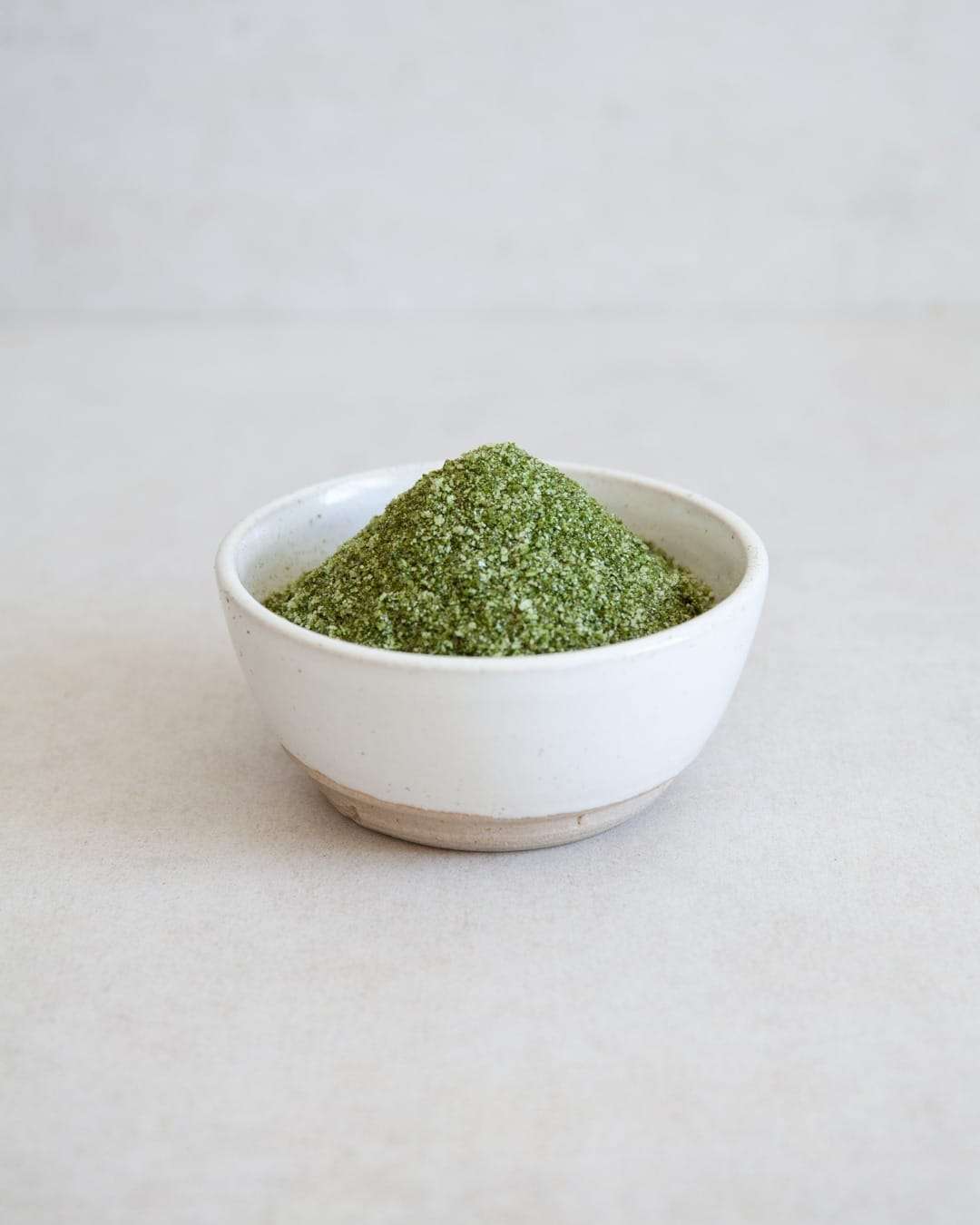Seaweed Salt

Think about the amount of times you use salt. Now imagine adding a pinch of nutrients every time you use it. That’s exactly what this seaweed salt is all about. Despite seasoning your food, you’re boosting it with a range of minerals, antioxidants and vitamins.
Use this just like you would use ordinary sea salt – to season stews, sauces, breads or as a finishing touch on roasted potatoes, popcorn and chocolate mousse.
Benefits of seaweed:
-
Nutrient-Rich: Seaweed is packed with essential vitamins and minerals like iodine, calcium, iron, and vitamins A, C, and K.
-
Iodine Source: Seaweed is a natural source of iodine, crucial for thyroid health.
-
Antioxidant and Anti-Inflammatory: It contains antioxidants and compounds like fucoidans, which have anti-inflammatory properties.
-
Sustainable: seaweed stores carbon, grows rapidly and requires no arable land. It is generally considered to have a low environmental impact and even a positive carbon footprint.
Storage
You can keep the seaweed salt for at least 2-4 months at room temperature. The dried nori sheets have a long shelf life by themselves and the salt will help to preserve it even further.
makes 4 tbsp
Ingredients
-
2 tbsp sea salt
Method
Toast each nori sheet by moving it back and forth on both sides over a low flame until the edges begin to wilt and it turns a little crispier (10-20 seconds) or for 10 minutes in the oven at 160°C.
Rip the nori sheets into smaller pieces, then use a small blender to grind them into a fine powder. Add the seaweed powder and sea salt to a jam jar, close it with a lit and shake it to mix them together. Then use it just like any salt, keeping in mind that it’ll only be half as salty.
Storage: Keep airtight for at least 2-4 months at room temperature.
As an Amazon Associate I receive a small commission from affiliate links on this page.

Seaweed Salt
Ingredients
- 2 nori sheets
- 2 tbsp sea salt
Instructions
- Toast each nori sheet by moving it back and forth on both sides over a low flame until the edges begin to wilt and it turns a little crispier (10-20 seconds) or for 10 minutes in the oven at 160°C.
- Rip the nori sheets into smaller pieces, then use a small blender to grind them into a fine powder. Add the seaweed powder and sea salt to a jam jar, close it with a lit and shake it to mix them together. Then use it just like any salt, keeping in mind that it’ll only be half as salty.

Where is the site on which you make the pomegranate water kefir?
It seems to have vanished just as I was trying to download and share it.
Here you go: https://bakinghermann.com/pomegranate-kefir-3/
The video is linked at the bottom of that page as well, if it’s useful.